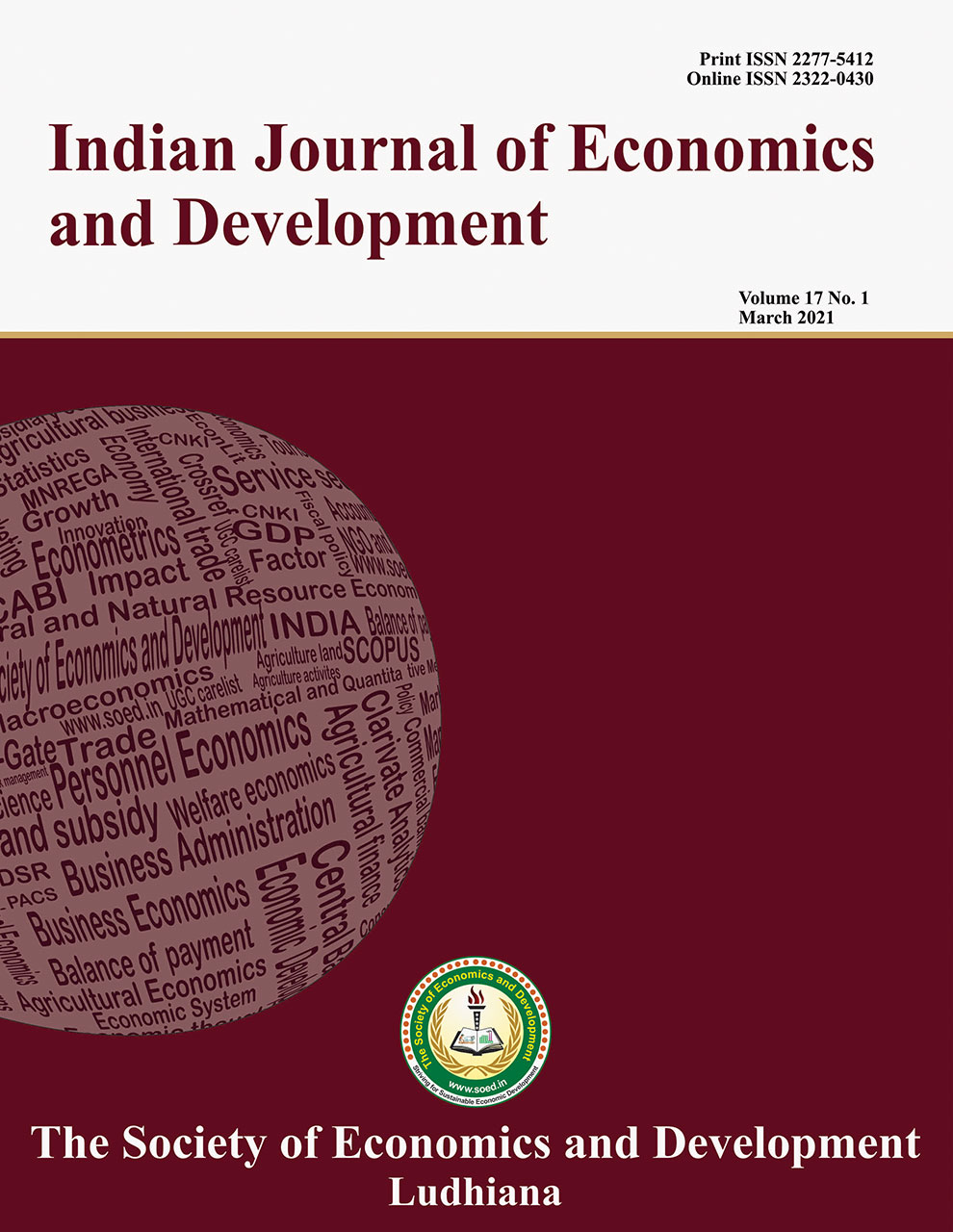Study of Technological Efficiency of Ginger Processing in East Sikkim- A Case Study

Price: ₹ 1000
Author: Peli Ronya1, Abujam Anuradha Devi2, and Archana Sharma3
Author Address: B. Tech (AE), Assistant Professor, and Senior Research FellowCollege of Agricultural Engineering & Post Harvest Technology, Central Agricultural University, Ranipool-737135 (Gangtok)
Keywords: Break-even points, flakes, operating expenses, point, powder, technical efficiency.
JEL Codes: Q12, Q13.
Abstract
The two processing units namely Sundar Sikkim, Marchak, and Nature Gift, Majhitar were selected based on ginger as major processing products. It was found that most of the raw ginger was processed into ginger flakes and ginger powder. The maximum raw ginger in the study area was found processed into ginger flakes. Sun, solar, mechanical, solar-cum-mechanical and fire drying (smoke-free) were implemented. Among these methods, most of the ginger was dried using the mechanical dryer. The total cost of production, total operating expenses, and total financial costs were calculated. It was found that among the operating expenses, expenditure on raw ginger occupied a major component followed by power and utility. The minimum expenditure for operating expenses was for packing and packaging followed by repair and maintenance. Interest on working capital was found to be an important component of total financial cost in dried ginger flakes production. The profitability estimation of dried ginger flakes revealed that ginger processing was a profitable enterprise. The Break-even point was calculated and the technical efficiency for ginger flakes processing was found to be efficient at given level resources and level of technology. The constraints faced by the processors were collected through a personal interview method using a pre-tested well-structured schedule, analyzed in the tabular form and each of the constraints was ranked. The major problems faced by the ginger processor were found to be lack of labour availability (skilled and unskilled) followed by high price expectations from the farmers.
Description
Indian Journal of Economics and Development
Volume 16 No. SS, 2020, 548-551
DOI: https://doi.org/10.35716/ijed/NS20-074
Indexed in Clarivate Analytics (ESCI) of WoS
Peli Ronya1, Abujam Anuradha Devi2, and Archana Sharma3
B. Tech (AE), Assistant Professor, and Senior Research FellowCollege of Agricultural Engineering & Post Harvest Technology, Central Agricultural University, Ranipool-737135 (Gangtok)
Corresponding author’s email: draadevi@gmail.com



